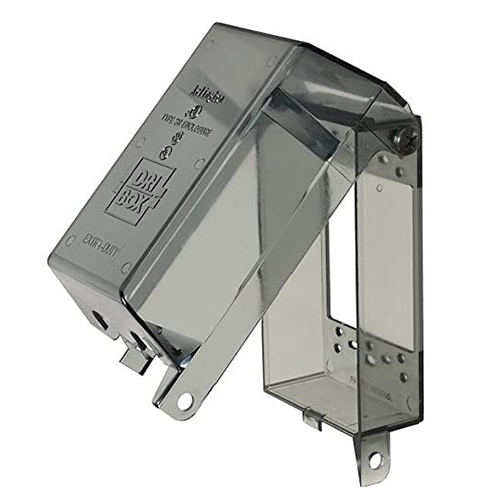
Does the data center Emergency Power Off (EPO) button put you on the road to safety — or push you down the fast track to sabotage? The infamous "Big Red Button" was originally designed to give data center staffers and emergency-response personnel a way to immediately cut power to critical server equipment if someone was electrocuted, a fire started, or an HVAC malfunction caused equipment to become severely overheated. But while it has the best intentions, the EPO button can also cause data center managers — and their clients — a world of pain if pushed at the wrong time.
Since EPOs are generally big, red, and way too easily accessible, they have a habit of spontaneously activating the button-pushing reflexes of "civilian" data center visitors who don't know any better… call it the "hmmmmm, I wonder what that one does" effect. And then there's the fact that they're usually located right next to the door, making them a prime target for accidental lean-ons and bumps. But whether the pushing of an EPO button is accidental, the result is always swift and complete, not to mention disastrous if uncalled for. Instant power loss, followed by hours (or days) of downtime and recovery.
And then there are the times when EPO buttons are needlessly pushed; and it isn't an accident. Incidences of malicious EPO activations are more common than many of us would like to believe. They have become a catastrophic parting gesture of disgruntled data center employees around the country. While an action like this would create a certified disaster in any data center, it could be especially damaging if it happened in a data center that controls a power grid or processes critical medical or government data.
So many possibilities for EPO mishaps, so little time. Here are a few smart and straightforward ways you can prevent EPO-related data center fiascos.
FIND OUT WHETHER YOU REALLY NEED AN EPO BUTTON.
Depending upon where your data center is geographically located, and which types of equipment you have, you may not even need an Emergency Power Off. Check local codes, as well as the ever-updated National Electrical Codes® (NEC) and National Fire Protection Association (NFPA) standards, to find out exactly what is required for your facility. If you have an existing EPO that turns out to be unnecessary, make life easier for yourself and remove it. It takes away the risk of accidental power shutoff. The same goes for soon-to-be-built data centers: if code doesn't require it, consider leaving out the EPO. You’ll work and sleep easier if there's less chance of needless disaster.
LABEL IT CLEARLY.
If yours is one of those data centers that can't do without an EPO function, one of the best things you can do is to clearly label what the Big Red Button is — and why it shouldn’t be pushed outside of dire emergencies. Don’t be fooled into thinking that jottings on a mere sticky note will fit the bill. They're great for around the office, but when it comes to critical data center labeling, it makes far more sense to opt for something that will last — and won't be easily peeled off. Better yet, go with a thick, foam-based label that actually fits around the button; and leaves you with plenty of room for warnings and emergency symbols. It's best to get your point across the first time around.
GET A PROTECTIVE COVERING OR RECESSED BOX FOR IT.
Well-made labels are a must-have for Emergency Power Off buttons, but unfortunately, they can't be relied upon to guard EPOs against the unintentional bump or stray elbow. For that, you need protection of a more physical nature, like a hinged plastic cover that must be opened before the button can be pushed — or a recessed assembly that keeps the button at a level that's slightly sunken into the wall's surface. Should anyone then accidentally bump the EPO or lean against the wall it's mounted on (and they will), activation won't be inevitable.
SET AN ALARM TO SOUND WHEN IT'S ABOUT TO BE PUSHED.
Make your EPO button's protective covering even better by wiring it with a pressure-sensitive contact switch that will set off an alarm as soon as the cover is removed. The sound of a shrieking alarm will not only warn you that someone is potentially tampering with the Emergency Power Off button but will help to make anyone who removes the button's cover think twice about the extremity (and likely consequences) of what they're doing.
Need a more traditional emergency wall switch system instead? Shop here for a simple emergency switch and here for a red emergency wall plate.


